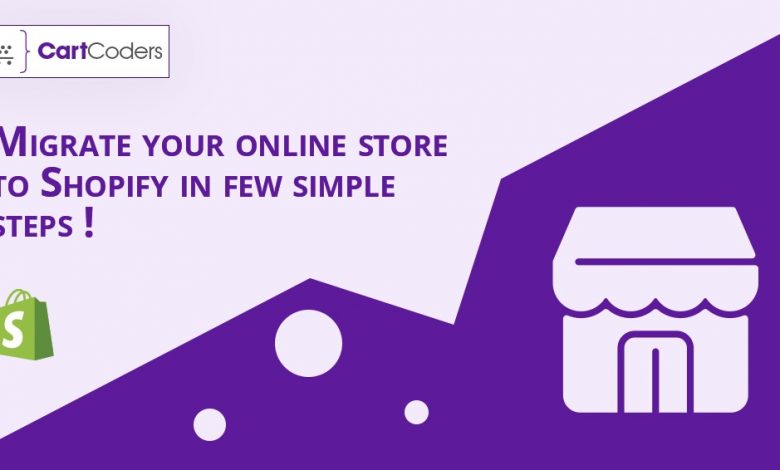Migrate Your Online Store to Shopify in Few Simple Steps !

If you have an e-commerce website, it’s important to make sure that your product information and other content make it to Shopify. Generally, as a store owner, you will have three Shopify migration options.
- Export and import data manually with the help of the internet.
- Take the help of automated migration services.
- Hire Shopify experts.
Today, an automated method of e-commerce migration is an advanced way for both web developers and newbies. They will run your business online in an automated manner. The plus point is it doesn’t require strong technical skills to work with.
Before migration, you must decide what can you transfer from your current store to the new one?
It is quite not easy to migrate data, design, and functions from one store to another. However, the automated way of e-commerce migration makes it possible for merchants like you and me to export data as freely as possible. Because the design and store functionality transfer often requires building the online shop from scratch, just with the same look and functionality.
Will I lose any of my store’s data when migrating to Shopify?
No, I don’t think so as per my own experience, Shopify has a very strong CSV tool, which moves products and customers in and out seamlessly. You will also get RSS feeds in place to transfer blog posts correctly and APIs set up for the smooth transfer of orders.
This automated data migration ensures all your current store data will be in total security during the migration. In short, your data is safe in the knowledge that nothing on your website will be lost or destroyed.
Now the important question is what data you can migrate to Shopify?
- Products.
- Product categories.
- Customer data.
- Orders and order statuses.
- Customer reviews.
- Manufacturers.
What customization options will I receive after Shopify migration?
Shopify provides you a highly customizable and tailored to different brands on an individual basis. With the help of Shopify Migration, you will be making the process of adapting and perfecting your store’s image to your brand identity considerably faster and easier.
Let’s dive into the process of migrating your store to Shopify in few simple steps given below:
- Configure Your Basic Administrative Settings
- Import Your Store’s Data to Shopify.
- Organize Your Products after Migration.
- Make Your Website Look Great.
- Set Up Your Domain.
- Set Up Your Shipping.
- Configure Your Taxes.
- Set Up a Payment Provider.
- Place Some Test Orders.
Wrapping-up:
From the above content, it’s clear the migration process is quite simple. Yet, the project gets far more complicated if you have a large number of reports to keep. Cartcoders e-commerce experts will help you accurately transfer data to Shopify, as well as maintain the required features. It offers Shopify migration solutions from different platforms, including popular Magento to Shopify, WordPress to Shopify, OpenCart to Shopify migration and many more.
We offer the best Shopify Migration Services which includes accurate data mapping and migration, Migration of the branded design, custom features, and apps, and integration with third-party services and tools.
Author Bio: Cartcoders is the best Shopify development company and e-Commerce Store development service provider in the USA. We are in the IT industry since 8+ years, We are Providing services like Shopify Development, Shopify Store Setup, Shopify Theme Setup, API integration, Theme Development and integration, Shopify Migration Service, Shopify Multivendor marketplace Services, Shopify theme conversion, theme Customization, Shopify SEO Services, total Shopify Solution available at us. We have a highly experienced team of Shopify experts working round a clock for our clients & providing all kinds of solutions and support related to the most popular web development platform Shopify.





